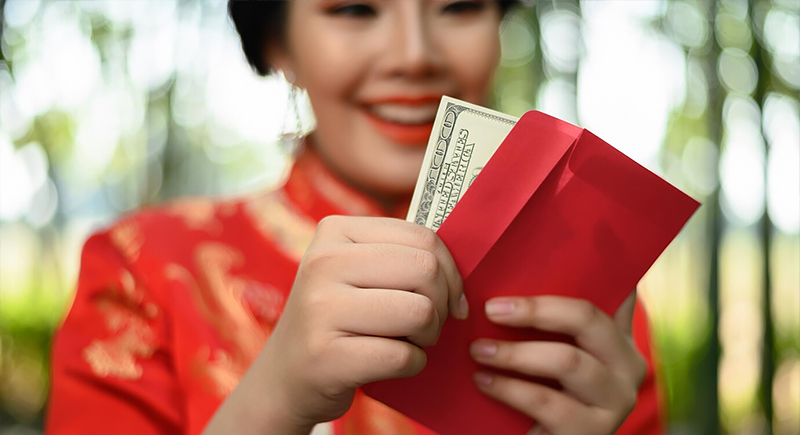12 Lunar New Year Traditions And the Meaning Behind Them
The Lunar New Year is a significant event marked by customs that reflect cultural values and beliefs. These traditions focus on preparing for a fresh start, fostering prosperity, and showing respect to family and community. Here’s a closer look at the traditions that make this celebration unique and their significance.
Red Lanterns

Credit: freepik
Lanterns symbolize the light guiding prosperity into homes. Traditionally, families hang them to honor ancestors and bring brightness to the year. In the evening, the glowing lanterns create a warm and festive scene, full of hope and joy.
Dumplings

Credit: flickr
Dumplings carry more than flavor. Their shape resembles old Chinese money, so eating them signifies a wish for financial success. Folding dumplings together also becomes a bonding moment with a shared hope for abundance among loved ones.
Lion Dances

Credit: flickr
The purpose of the energetic lion dance is to banish negativity and bring good luck. The coordinated movements of the dancers mimic a lion’s strength and creates a lively atmosphere while symbolizing courage and prosperity for the community.
Red Envelopes

Credit: freepik
Typically given to children, these envelopes contain money and are a way of sharing blessings and teaching the value of kindness and generosity. It’s a heartfelt wish for happiness and success.
Fruits

Credit: flickr
Golden fruits like oranges and tangerines aren’t randomly chosen for the holiday. Their bright color resembles gold and symbolizes wealth and luck. Displaying them prominently in homes turns these everyday fruits into symbols for abundance in the year ahead.
Fireworks

Credit: freepik
The popping sound of fireworks during Lunar New Year has deep roots in mythology. Legend has it that the noise scared away a creature called Nian, who threatened villages. Now, the tradition continues, not just to entertain, but to drive away lingering bad energy.
Temple Visits

Credit: flickr
Temples are crowded with visitors seeking blessings for health, wealth, and happiness. The act of lighting incense and offering prayers is a quiet way to set intentions. These visits mark a spiritual start to the year and foster peace for individuals and families.
Ancestor Worship

Credit: flickr
Paying respects to ancestors is central to the celebrations. People offer symbolic foods and light incense as a gesture of gratitude. This practice is about remembering the guidance of past generations and seeking their blessings for the year ahead.
Avoiding Negative Actions

Credit: freepik
Certain behaviors are off-limits during the New Year. Breaking dishes, arguing, or saying negative words are believed to invite bad energy. These precautions reflect a collective focus on positivity, where every action is aimed at ensuring a prosperous and harmonious year ahead.
Wearing New Clothes

Credit: flickr
A new outfit means starting fresh. Wearing bright, vibrant colors like red isn’t just for show—it’s believed to attract good energy and ward off bad spirits. However, the key is in choosing the right attire, as the right clothing sets a hopeful tone for the year to come.
Cleaning Rituals

Credit: freepik
Before the celebrations, homes are scrubbed spotless to leave behind any bad luck. Superstition holds that the act clears the way for good fortune. Cleaning on New Year’s Day, however, is avoided entirely, as it’s believed to wash away the blessings of the year ahead.
Family Dinners

Credit: flickr
Reunion dinners are central to the celebrations. They’re a chance to strengthen family ties and express gratitude for shared moments. Each dish served holds symbolic meaning to turn the meal into a celebration of unity, hope, and collective wishes for a positive year.
Preparing Sticky Rice Cakes

Credit: Youtube
Sticky rice cakes, such as nian gao, hold deep cultural meaning. The word “gao” sounds like “high” in Chinese, which symbolizes growth and achievement. Families prepare and share these sweet cakes to wish each other progress, whether in careers, education, or personal goals.
Lighting the First Incense Stick

Credit: flickr
At the stroke of midnight, many families light the first incense stick at home or in temples. This practice marks the start of the new year and is believed to bring blessings. Being the first to light incense is thought to ensure luck and success throughout the year.
Fortune Calligraphy Displays

Credit: flickr
Calligraphy featuring the Chinese character for “fortune” is often displayed upside-down during the New Year. This clever arrangement signifies “fortune arriving,” as the phrase for “upside-down” sounds like “arrival” in Chinese. It’s a small but meaningful gesture to invite prosperity into the home.